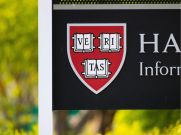Editor's Note: This article was originally published under the name "John David," the former pseudonym of NAS Communications & Research Associate David Acevedo. To learn more about why David no longer writes under this name, click here.
CounterCurrent: Week of 7/12
The coronavirus pandemic has been a bull in the higher ed china shop. Administrators were forced to send students home prior to finishing the spring semester, and many graduates participated in remote commencement ceremonies complete with virtual walks across stage. Countless hourly workers—those working in dining halls, public safety, facilities, etc.—were furloughed or laid off while diversity bureaucrats continued to collect generous paychecks. Colleges and universities lost revenue at an alarming rate through tuition and room and board remission; decreased donations and yield from investments; and declining enrollment for the 2020-21 school year, to name a few factors.
While closing down last semester was difficult, reopening in the fall will be harder. Schools, even in rural areas, are under immense pressure from federal, state, and local authorities to both reopen and to obey health protocol faithfully, not to mention the concerned faculty and students who have to weather this storm and face its immediate and long-term consequences. Traditional, in-person higher education was simply not designed for “social distance”—many institutions have been forced to rebuild their educational infrastructure from the ground up.
It’s now mid-July, and time’s up. Colleges and universities around the country have begun announcing their eagerly anticipated reopening plans for the fall semester, which range from online-only instruction and closed campuses to in-person classes and nearly full-capacity operation. The Chronicle of Higher Education is tracking the reopening plans of over 1,100 colleges and universities, compiling some useful data in the process. We see that, for example, a whopping 85% of American colleges and universities are “planning for in-person” or “proposing a hybrid model” (part in-person, part online).
And yet, perhaps ironically, all eyes are on the Ivy League and other elite universities to act as “leaders” of the reopening process—the very same schools that belong to the 9% “planning for online” minority. Harvard has announced that all classes for the 2020-21 school year will be online, while also inviting 40% of students to return to campus. Princeton similarly will deliver most classes remotely and reopen campus with partial capacity. MIT has only invited seniors back to campus, citing the fact that their schedules are the least flexible and their courses require the most in-person work.
What about tuition? Surely tuition cuts are coming to students who find themselves facing an online-only semester, right? Not so much. In fact, Harvard has continued to raise total billed costs from $68,607 to $72,356. Princeton has lowered tuition by 10%, still collecting nearly $50,000 from 40% of its students.
Meanwhile, Harvard and MIT have sued the Trump administration over ICE’s announcement that international students not taking in-person classes need to transfer schools or go home. These same students almost never receive financial aid, and schools are eager to collect their full tuition payments for the coming school year. But ultimately, Harvard doesn't need the money—the university’s $40+ billion endowment will be just fine. Elite universities are really hedging their bets: Harvard and others want to show that they are "socially responsible" by putting all classes online, while also demonstrating their commitment to elitist traditions by bringing nearly half of the students to campus.
Most schools don’t have that luxury. In this week’s featured article, Kevin Carey of The New York Times examines the ways in which middle-of-the-road colleges and universities face daunting reopening challenges that the privileged few can afford to ignore. He writes:
Which means that, in our topsy-turvy coronavirus world, online higher education has abruptly gone from down-market and sometimes disreputable to a privilege reserved for the elite few. In 2020, only the best and the brightest will be allowed to not go to college. …
But for colleges in the middle of the pack, the financial calculus looks very different. Public universities are facing huge state budget cuts as state tax receipts plummet and Congress continues to debate the wisdom of new bailout funds. Many private colleges were already teetering on the edge of financial calamity before the pandemic and could be pushed into bankruptcy if large numbers of students choose to delay enrollment or demand steep price discounts for online learning. ...
...it’s telling that the universities with the most money and prestige are coalescing around a safety- and technology-centered approach to higher learning that millions of students will be denied.
Elite colleges and universities have not provided a tangible solution many hoped for, as their plans would spell bankruptcy and closure for most schools in America. What we need is a more balanced approach that keeps faculty, students, and staff safe while allowing higher education’s core, in-person functions to continue. Only time will tell who steps up to the plate.
CounterCurrent is the National Association of Scholars’ weekly newsletter, written by Communications & Research Associate David Acevedo. To subscribe, update your email preferences here.













